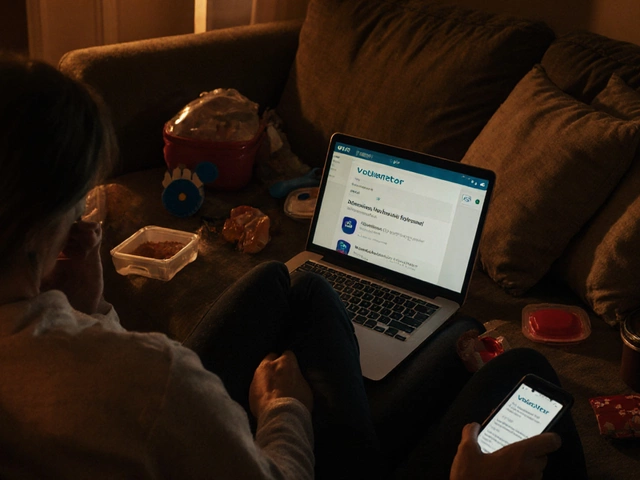Ever sat around and thought, “How do I actually start a charity fund?” You’re not alone. Setting up a fund to help others sounds huge and complicated, but it’s honestly pretty doable when you break it down. The first thing most people get wrong: they think you have to be rich, famous, or know a bunch of lawyers. Spoiler—tons of regular people do this every year.
So, where do you start? Forget the fancy jargon for a minute. Picture your goal: do you want to help local kids with school supplies, support animal rescues, fund research for a disease in your family? You don’t need all the answers right away, but nailing down what and who you want to help guides every step you’ll take. It’s like grabbing a compass before you head into the woods—you wouldn’t skip that, right?
Really, it’s not about having deep pockets. It’s about having a clear plan and following a few essential steps—stuff like picking the right name, figuring out the legal side, registering your fund, and making sure you’ve got ways to collect money safely. Most slip-ups happen when people skip the basics or try to cut corners. Want this to last? Best to get it right from the start. I’ll walk you through exactly what it takes, step by step, so you’re not left guessing or Googling at midnight.
- Understanding What a Charity Fund Really Is
- Deciding Your Purpose and Goals
- Legal Steps and Registration
- Building a Team and Governance
- Fundraising and Attracting Donors
- Keeping Things Transparent and Accountable
Understanding What a Charity Fund Really Is
Let’s clear something up—setting up a charity fund isn’t just for celebrities or billionaires. At its core, a charity fund is a legal setup where money is collected, managed, and then given out to solve a problem or support a cause. You’re basically making a pot of money just for good deeds, and the law gives you some special rules (and perks) to do it right.
There are different ways to structure a charity fund. A lot of people set up their fund as a “charitable trust.” That means a group of trustees legally promise to use the fund’s money only for the issues or goals you name in your paperwork. You can also choose to start a charitable foundation, which often works with bigger sums of money and has more formal processes. The most important part: the money can’t just be handed out for any reason—your purpose needs to fit one of the “charitable purposes” defined by tax laws (think: education, relief of poverty, health, animal welfare, or community projects).
- You don’t own the money personally—once donated, it must go toward your written charitable mission. You can’t just take it back or use it for something else, even if you change your mind.
- Charity funds get tax perks so more of your fundraising cash goes toward the actual cause (and donors can sometimes get tax breaks too).
- Transparency is the name of the game: expect to file paperwork every year and account for every penny you raise or spend. People giving to your fund want to know exactly where their money is going.
Sure, there are rules, because these funds are built on trust. But that’s what sets them apart from random crowdfunding pages: having everything official helps donors feel safe and makes your mission stand out from all the noise online. Once you’ve got your fund recognized by the authorities, you can open bank accounts, apply for grants, and pull in bigger support than you ever could as just a single person.
Deciding Your Purpose and Goals
This part isn’t just paperwork—it’s your whole reason for starting a charity fund. You need to get brutally clear about what you want to fix, help, or change. For example, are you into feeding hungry families in your city, funding school trips for underprivileged kids, or maybe saving a park from being bulldozed? Being specific helps people understand why they should support you.
You don’t have to solve every problem under the sun. Focus on one thing and do it well. The Charities Aid Foundation points out,
“Focused, well-defined goals make it easier for donors to connect, and easier for volunteers to see where they fit in.”Don’t be vague like “helping the community”—explain how, who, and what you’ll help.
Jot down your main goal—what real-world change are you aiming for? Then ask yourself what success would look like. Is it backpacks handed out? Meals given? New playgrounds built? You’ll want goals you can actually track. Check out this table for quick stats on what makes charity funds tick in the real world:
| Common Charity Purposes | Example Measurable Goal | UK Registered Funds (2024) |
|---|---|---|
| Homeless Support | Provide 1,000 hot meals/month | 2,500+ |
| Children's Education | Fund 500 school kits/year | 3,400+ |
| Animal Rescue | Rescue and rehome 100 pets/year | 1,600+ |
Once you know your main goal, break it down into smaller, realistic steps. If your goal is to fund cancer research, for example, you could aim first to raise £5,000 for a single research grant. The clearer you are about your purpose, the easier it’ll be to spread the word—and rally people to help.
Need a quick checklist? Here’s what to cover before moving to the next step:
- Define the main issue you’re targeting
- Pick a specific group or cause
- Set a clear, trackable goal
- Make sure your set up charity fund idea fills a real need
Those simple questions keep you honest and help your fund stand out. This groundwork is what sets the strongest charity funds apart from the endless crowd of good intentions.
Legal Steps and Registration
This is where things get real—you can’t just say you’re running a charity fund and start taking money. There are some hard rules you’ve got to play by. The truth is, paperwork matters here because it protects you, your donors, and the folks you’re trying to help.
First thing: pick the legal structure for your charity. The most common choice is a charitable trust or a nonprofit organization. In the U.S., that means forming a nonprofit with your state (yep, paperwork) and sometimes picking a federal tax-exempt status, often called 501(c)(3). Other countries have similar setups, so check your local laws.
- Choose a unique name for your fund (people should find you easily and not mistake you for someone else).
- Write a clear mission statement—that’s your fund’s “why.” You’ll need this piece for your founding documents, and more places will ask for it than you think.
- Draft and file your articles of incorporation (or a trust deed if going the trust route). This file is pretty much your charity’s birth certificate.
- Apply for a tax ID or employer identification number (EIN). Even if you don’t plan to hire anyone, you’ll use this for banking and taxes.
- Register with your state or country’s charity regulator. In the U.S., that’s usually the Attorney General or a Charity Bureau. This protects you legally and shows you mean business.
- If you want donors to claim a tax deduction, go for 501(c)(3) status with the IRS—or the local version if you’re not in the States. Be ready to wait a few months, but it’s worth it for the trust and benefits.
Don’t skip these details just to get started faster. If you try to run before finishing the legal stuff, you could face fines, lose donations, or have to shut down. One more thing: keep everything—bylaws, founding docs, filings—in a digital folder you can actually find. Trust me, you’ll thank yourself when a bank or government agency needs a copy down the road.
Sorting out the paperwork might sound dull, but it’s what lets your charity fund actually help people and stick around for the long haul.

Building a Team and Governance
Here’s where a lot of new charity funds hit either rocket fuel or a brick wall: your team. That’s not just your best friends and family (even if you trust them); it’s about having the right mix of skills and accountability. Legally, most places require at least three trustees or board members for a charitable trust—so don’t plan on going solo.
The board should cover a few core skills: someone good with money (think: budgets and bank accounts), someone who can keep things organized, and someone comfortable talking to people or the media. If you can, get people who are not related—some countries and states need this, and it helps your charity look more credible. Diversity in background and opinion isn’t just a nice touch, it helps with problem-solving and avoiding blind spots.
According to UK Charity Commission rules, "effective governance helps charities operate with clear purpose and sound decision-making" (source).
“Good governance is about providing leadership, direction and accountability to your organization, setting an example and maintaining an ethical culture.” – Charity Governance Code (UK)
Here’s what you want to lock down in this stage:
- Define board member roles: Chair, Treasurer, Secretary as basics. Write job descriptions, even if it feels extra—people skip this and end up confused or arguing later.
- Hold regular meetings: At least four times a year is suggested. Make agendas and stick to them. Take notes (minutes).
- Conflict of interest policy: Everyone should declare if something comes up that might benefit them personally. There’s no shame in being open—donors love transparency.
- Set up decision rules: How do you vote? What needs the whole board? Get these questions answered early.
Why does this matter so much? Well, poorly run charities burn out fast—or worse, end up in legal messes. A quick stat to hit it home: according to the National Council of Nonprofits in the U.S., about 20% of small nonprofit start-ups don’t make it five years, with internal issues being a top cause.
| Key Board Roles | What They Do |
|---|---|
| Chair | Leads meetings, decision-making, keeps things moving forward |
| Treasurer | Handles the money, budget, and keeps financial records |
| Secretary | Manages documents, minutes, and admin stuff |
If you’re still not sure who to ask, plenty of local volunteer centers or professional groups have people ready to help. And sometimes, people with no direct link to your cause bring the fresh ideas you never knew you needed. Bottom line: get a team you trust, set the rules early, and you’ll save yourself major headaches down the road.
Fundraising and Attracting Donors
If you want your set up charity fund dream to work, you need to get good at bringing in money and getting people interested. Even the most inspiring causes flop without smart fundraising and serious donor love. The first step: don’t wait for people to “find” you—go to them.
Start simple. Tell your story in a way that connects. Be clear about what you do, who you help, and why donations matter. Trust goes a long way, so make it personal and real. Social media works fast—posting updates, stories, or behind-the-scenes photos grabs attention, especially when you show real impact. Even TikTok now hosts charity drives, and Facebook fundraising tools let supporters set up their own mini-campaigns for your fund.
Crowdfunding platforms are a lifesaver, especially when you're just starting out. GoFundMe, JustGiving, and Kickstarter for non-profits make it easy for people anywhere to support your charity. Each platform charges fees (usually between 2.9% and 5%), so check the fine print before diving in.
- Create a fundraising event—think fun run, trivia night, or bake sale. People love being part of something real, and small stuff adds up fast.
- Send personal thank-yous to donors. A short video, a handwritten note, or a social media shoutout goes further than you’d think. Studies show donors who are thanked within 48 hours are four times more likely to give again.
- Partner up with local businesses. Some may match donations, give supplies, or pitch your charity to their customers.
- Offer easy online donation options. Mobile payment and QR codes are way better than mailing checks. 77% of people who donate online say they did so because it was simple and quick.
More than 60% of smaller charity funds raise most of their money from groups of under 100 regular donors, not giant single gifts. So focus on building relationships, not chasing whales.
| Fundraising Method | Avg. ROI (% raised per dollar spent) | Popular Platforms/Settings |
|---|---|---|
| Crowdfunding | 300 | GoFundMe, JustGiving |
| Social Media Campaigns | 250 | Instagram, Facebook, TikTok |
| Local Events | 400 | Community centers, parks |
| Matching Gifts | 350 | Company partner portals |
If your fund supports a cause people can see and relate to, shout it from the rooftops. Be open about where money goes—post photos, share progress, celebrate wins publicly. Nothing inspires donations faster than proof that real change is happening because of what they gave.
Keeping Things Transparent and Accountable
If you want your charity fund to earn trust—and actually make a difference—there’s no skipping transparency and accountability. People want to know where their money goes. In fact, a large-scale 2023 survey by Give.org found that 76% of donors only support groups that clearly show how funds are used.
First things first: set clear rules for how you handle money. That means documenting every donation, every expense, and every transfer. Consider using accounting software made for nonprofits—something simple like QuickBooks for Nonprofits or even Google Sheets, if you’re just getting started. If you mess up or lose track of a dollar, you could ruin your reputation instantly.
Here’s exactly what you’ll need to stay on top of things:
- Keep all receipts, invoices, and bank records in one secure place.
- Set up a separate bank account just for the charity fund.
- Prepare and share annual financial reports—post them online if you can.
- Give detailed project updates to donors. Show proof—like photos, stats, or short stories—not just, "Your money helped. Trust us."
- List your board members and key volunteers on your website.
- Set up a way for people to ask questions or raise concerns, whether it’s an email, a web form, or old-fashioned phone calls.
Lots of countries make auditing a legal requirement for charity funds. In the US, once you hit $500,000 in annual donations, you need a formal audit. Even below that, regular checkups by a neutral accountant aren’t just smart—they’re expected.
Want to see how the top charities do it? Take a peek at this table showing standard practices from groups that consistently score high with Charity Navigator (a big watchdog site):
| Charity Practice | % of Top Charities Using This (2024) |
|---|---|
| Annual Published Financial Reports | 100% |
| Independent Board | 95% |
| Public List of Key Staff | 89% |
| Regular Donor Updates | 92% |
People look up your charity online before they ever donate. Staying open and honest not only keeps you legal, it actually grows your reach. If you get a big win—like a donor who doubles your yearly budget—chances are, it’s because you handled the set up charity fund basics with care and honesty. Turns out, keeping things transparent pays off way more than cutting corners ever could.






